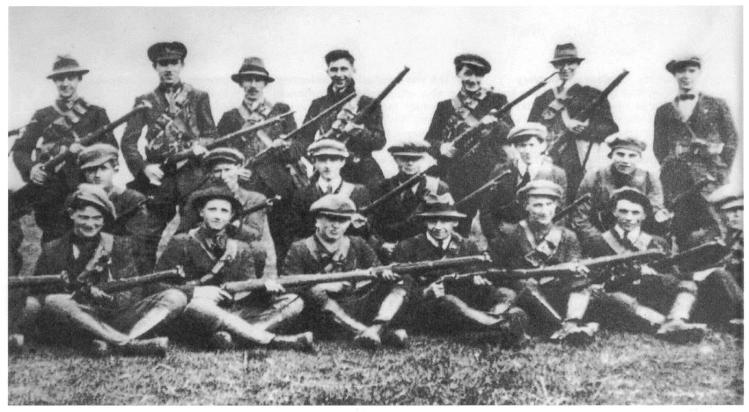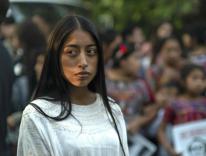
Around Christmas, having gathered the usual provisions, I was in line to check out at the liquor store. I had a bottle of Jameson in one hand and a six-pack of Guinness stout in the other. The Jameson was for me, the Guinness for my wife. An older gentleman behind me in line was filling up a small cart. After glancing at my purchases, he wryly asked if I was Irish. “A few generations ago,” I responded. “I wrote a book about the Irish revolutionary Ernie O'Malley,” he said. “That would be in the 1920s, I think,” I responded. “That's right—1916 to 1921,” he said before walking away to find another item.
After I checked out, I looked for him in the store but couldn’t find him. I wanted to ask for the title of his book. I thought I had been rude not to do so in the first place. A couple of days later, my wife and I tracked down the mystery author on the internet. He turned out to be Ernie O’Malley’s son, Cormac. A retired international lawyer, Cormac O’Malley lives in Stonington, Connecticut, just across the Mystic River from us, and has co-authored a biography of his father. He has also edited his father’s war papers and letters.
I contacted Cormac by email, mentioning a bit more about my own Irish heritage. There is Irish on both sides of my family tree, including a passel of O’Briens, Linehans, and Murphys. I recently learned that my maternal great-grandmother was born in Galway and immigrated to Boston in the 1890s. I have a sentimental interest in things Irish, but my parents and grandparents never spoke of their Irish ancestry. They simply thought of themselves as Americans, no hyphen. I once asked my grandfather Linehan if he had any interest in visiting Ireland. “If it was so great, why did they leave,” he answered.
In my email to Cormac, I mentioned Commonweal. Writing back, he noted that his father had written a book review for Commonweal. I found it in the archives. Naturally, Ernie O’Malley reviewed books titled A History of Ireland and The Irish Struggle. He only wrote for Commonweal that one time, in the issue dated April 6, 1934. O’Malley was judicious in his assessment of the two books. The Irish Struggle, he wrote, sees the Irish War for Independence through “the eyes of a Frenchman…. He weighs both sides, shows the spread of ‘Red’ and ‘Green’ terror and its effects.” O’Malley notes that the book’s author clearly embraced the Treaty of 1921. O’Malley himself did not—and helped lead anti-Treaty IRA forces against the newly formed Irish state. He barely escaped execution after the civil war ended.
When the 1916 uprising began, O’Malley had been a medical student, and was somewhat indifferent to demands for Irish independence, which seemed futile. The brutal British suppression of the Easter Uprising and the execution of its leaders changed his mind. He became an important IRA commander during the war for independence. Wounded several times, captured and tortured, he escaped from a British prison—and likely from execution—with the help of sympathetic Welsh guards.
I have now read On Another Man’s Wound, O'Malley’s 1936 memoir about the war for independence. I knew little about the details of that war. It was quite brutal. The British shot prisoners of war, contending they were traitors, not soldiers. The IRA executed captured British officers in retaliation. O’Malley’s book ends with him ordering the execution of three British officers after the British executed several IRA prisoners. He is unapologetic about that decision, which reveals both the desperate nature of the conflict and his own willingness to die for the cause. Although captured twice, he managed to conceal his identity and survive. It was a war in which it was never certain who was your enemy and who were your allies.
O’Malley mostly trained troops and organized attacks on police barracks in the rural North, West, and South, moving from cottage to cottage, mostly at night. He was a middle-class kid from Dublin, and his encounter with the Irish farmers and peasants who protected him deepened his inchoate conviction that Ireland should be ruled by the Irish. It would help to have a good county map of Ireland in hand while reading the book, as O’Malley bikes or walks over much of the country, from Tipperary and Kilkenny in the south to Donegal and Dublin. There is some well-observed ethnography. He found the Irish past, and often the Irish language, very much alive among people in the countryside. “I regretted I had not studied Irish thoroughly,” he writes. “I knew next to nothing of these poets save in translation. But here the seventeenth and eighteenth centuries lived again, for these two men could tell story after story of the poets’ pranks, drinking and songs, and describe them as if they had lived in the same parish.”
In a youthful and romantic way, he came to feel that his city-bred ambitions were inauthentic compared to the lives and convictions of those who lived on the land. “They had no feeling of equality or inequality, but a definite reality, and it would be a long time, I knew, before I could ever hope to have anything as real in myself as they had,” he wrote. “I found the country strange. Life had been very sheltered at home.”
He was able to overcome his fears and doubts about the war, thanks to the solidarity forged with those who fought beside him or sheltered him. The strength to fight against overwhelming odds grew out of a growing love for the land, “our safest and best ally; courage came through the people who suffered and who were with us in our weakness, loneliness and strength.” It was a war, O’Malley writes, punctuated with many recitations of the rosary—both by the rebels themselves and by those who hid them from the British. (After the war, many of the British police, known as the hated Black and Tans, were sent to Palestine to straighten things out between the Palestinians and the Jews. That didn’t work out either.)
O’Malley was seriously wounded in 1922 when the pro-treaty troops managed to capture him. He was then second in command of the anti-Treaty IRA efforts. When he died many years later, there were still five bullets in him. He was the last anti-Treaty prisoner released by the new Irish government after the civil war. Leaving Ireland in 1925, he made common cause with Basque and Catalan separatists in Spain. He then returned to his medical studies in Dublin, but eventually abandoned them. He later traveled to the United States and Mexico. In New York in 1933, he met Helen Hooker, an artist from a prominent Connecticut family. They married and returned to Ireland, where their three children were born. O’Malley became a noted journalist and historian, and served as a consultant for John Ford’s melodramatic Irish fairytale, The Quiet Man (1952), and The Rising of the Moon, filmed in 1956. O’Malley died in 1957, and was given a state funeral. The Singing Flame, his memoir of the Irish civil war, was published many years later. I’m eager to read it.
Please email comments to [email protected] and join the conversation on our Facebook page.
Previous Story
More Than a Sequel
Next Story
Denialists & Defamers


